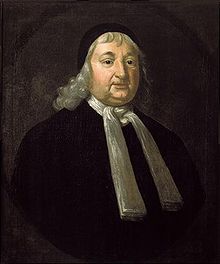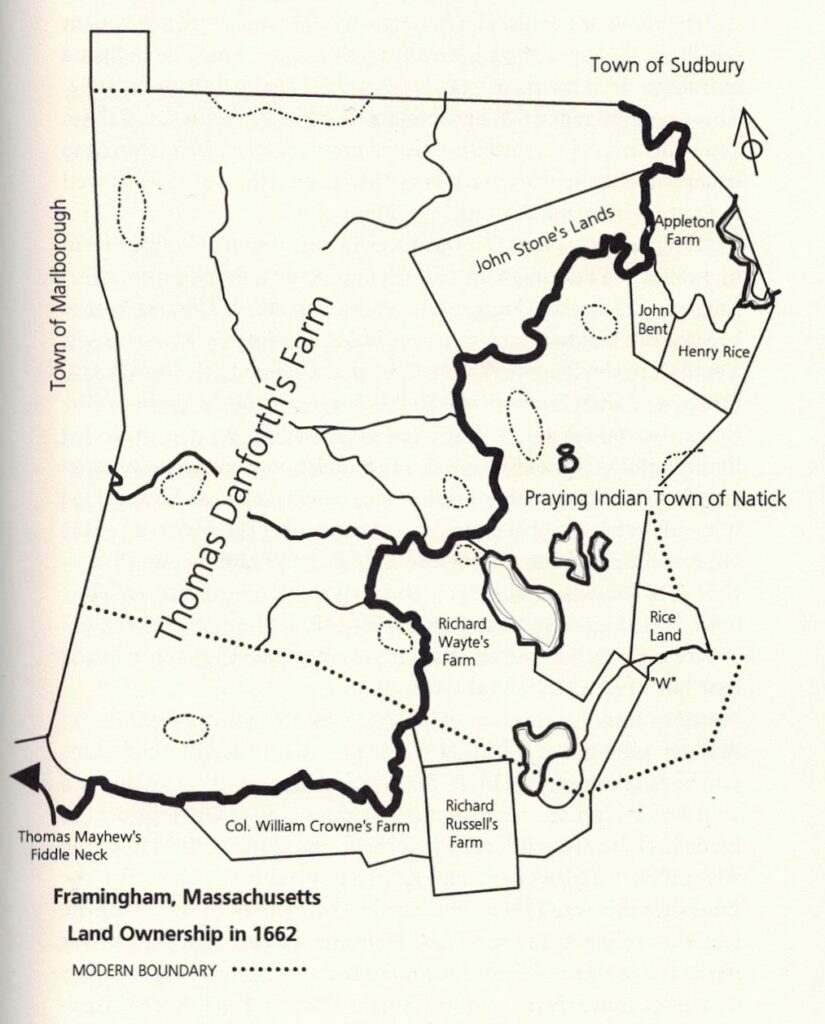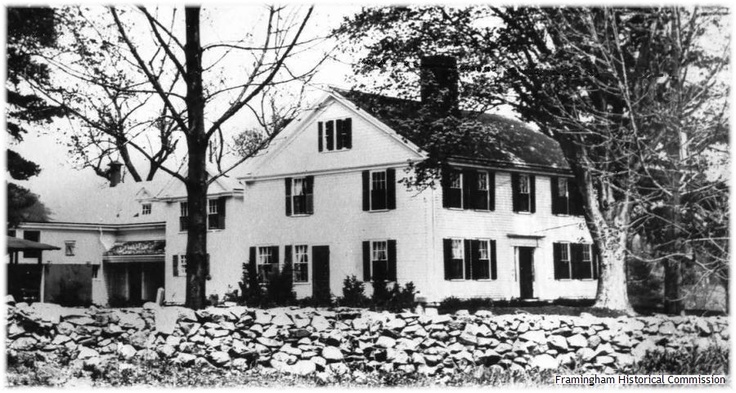The man who gave the town of Framingham its name, never lived here. Thomas Danforth (baptized 1623-1699) had a vision of establishing his own township. His dream began when the General Court gave him two hundred fifty acres of land in the central part of the Massachusetts Bay Colony’s wilderness as payment for services to the colony. Over time, Thomas received other land grants and purchased additional tracts of land in the area he came to call Framingham after his hometown of Framlingham, England.
In 1634, after the death of his wife, Nicholas Danforth and his children emigrated to Massachusetts Bay Colony from their home in Framlingham, Suffolk, England. At the time, Thomas, the oldest, was eleven years old. The family settled in Cambridge on what is now known as Kirkland Street. Nicholas became active in the colony’s civic life and was a member of the colony’s General Court. He died in 1638, leaving Thomas to care for his younger siblings.

Thomas became a freeman of the colony in 1643. This meant that he could vote and participate in the political life of the colony. And participate he did! He was an elected representative from Cambridge in 1657-1658. For twenty years, 1659-1678, Thomas was a member of the Court of Assistants. The Court of Assistants is comparable to our present day State Senate. From 1679-1686 and again, from 1689-1692, he served as Deputy Governor of Massachusetts. He was appointed president of the Province of Maine from 1679-1686. In 1692, he was made associate Judge of the Superior Court, a position he held until his death in 1699. Thomas was also a selectman and town clerk in Cambridge for many years.
In addition to his political and civic duties, Thomas worked for Harvard College. From 1650 to 1669, he was the treasurer of the college. He continued to serve Harvard as it’s Steward and Inspector of Economical Affairs from 1669-1682.
It was in 1660 that Thomas began to acquire lands in the central part of the Massachusetts Bay Colony. He received his first grant of two hundred fifty acres west of Stone’s land as payment for indexing and overseeing the publication of the blue laws. On May 7, 1662, he was granted two hundred more acres as reimbursement for money he paid out of his own pocket to the commissioners of the Province of Maine. By October 27 of that year, the General Court had also awarded him all the land between the Sudbury River and Marlborough. His total land holdings came to approximately 14,000 acres. Thomas then went on to purchase the Wayte Farm and the Russell Farm which totaled 800 acres. These farms were located to the west and south of Farm Pond. Thomas was now the largest landowner in the area, and dreamt of establishing his own township. His lands were called Danforth Farms.

In 1686, Thomas no longer held the office of Deputy Governor. He now had time to begin planning his town. Rather than selling pieces of his land to settlers, he proposed 999 year leases. This would allow the settlers complete control over the leased land, and also provide monthly income to Thomas and his heirs for life. Thomas did not live to see Framingham incorporated as a town. That happened in 1700, a year after he died.
It was during Thomas’ term as Deputy Governor that the witch hysteria engulfed Salem. Thomas, as Deputy Governor, was one of the magistrates who questioned some of the accused witches on April 12, 1692. These included Sarah Cloyce and Elizabeth Proctor. But before any of the trials actually began, Thomas was replaced as Deputy Governor by William Stoughton. No one knows for sure what Thomas thought of the trials and executions of the Salem witches, but there are suggestions in the writings of some of his contemporaries that he disapproved of them. It is also suggested that he worked behind the scene to aid Sarah Cloyes and her family escape and settle on the western part of his land in Framingham. The Nurse, Bridges and Towne families also sought refuge in the wilderness of Framingham. This area near the Cowassock Brook became known as Salem Plain. Today, it is called Salem End.

Thomas Danforth married Mary Withington (?-1697) of Dorchester on February 23, 1644. The couple had twelve children. Of his twelve children, six died before the age of three, three sons died in their twenties, and three daughters lived to adulthood. Thomas died on November 5, 1699 in Cambridge. He was survived by his three daughters, Sarah Whiting, Mary Brown, and Elizabeth Foxcroft, sixteen grandchildren, and three great-grandchildren.
Facts
- Parents: Nicholas Danforth (1589-1638) ; Elizabeth (Symmes) Danforth (1596-1629)
- Siblings: Mary (1619-1674), Elizabeth (1619-1680), Anna (1622-1702), Lydia (1625-1674), Samuel (1626-1674), Jonathan (1628-1712)
- Children: Sarah (1645-1645); Sarah (1646-?), Mary (1649, died young); Mary (1650-?); Samuel (1652-1676); Thomas (1654-1675); Jonathan (1657-1657); Jonathan (1659-1682); Joseph (1661-1663); Benjamin (1663-1663); Elizabeth (1662-?); Bethia (baptized June 16, 1667- 1668)
- Served as Cambridge town clerk, 1645-1668
- Charles I, King of England, granted a royal patent giving Maine provincial status. Sir Ferdinando Gorges was appointed to the position of proprietor of Maine. In 1652, Massachusetts Bay Colony took control over the Province of Maine when Sir Gorges was ousted from his position after Charles I lost the English Civil Wars. Maine separated from Massachusetts in 1820, when it was granted statehood.
Bibliography
Herring, Stephen. Framingham: An American Town. Framingham Historical Society, The Framingham Tercentennial Commission, 2000.
“Maine.” Britannica Library, Encyclopedia Britannica, 14 Sep. 2018. library.eb.com/levels/referencecenter/article/Maine/111241#78092.toc. Accessed 22 Jun. 2020
Parr, James L. and Kevin A. Swope. Framingham: Legends & Lore. History Press, 2009.
Temple, Josiah. History of Framingham, Massachusetts, 1640-1885. A Special Centennial Year reprinting of the 1887 edition. New England Press, 1988.
“Thomas Danforth.” Dictionary of American Biography. Charles Scribner’s Sons, 1936. Gale In Context: Biography, https://link.gale.com/apps/doc/BT2310015100/BIC?u=fpl&sid=BIC&xid=1f1f82ba. Accessed 30 Apr. 2020.
“Thomas Danforth (20 Nov 1623–5 Nov 1699), Memorial 104689542.” Find A Grave. https://www.findagrave.com/memorial/104689542/thomas-danforth Accessed 18 May 2020.